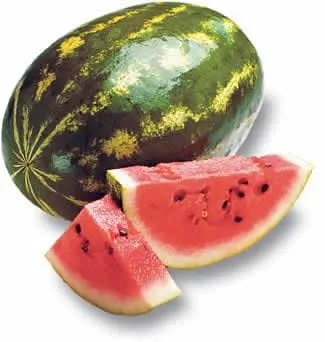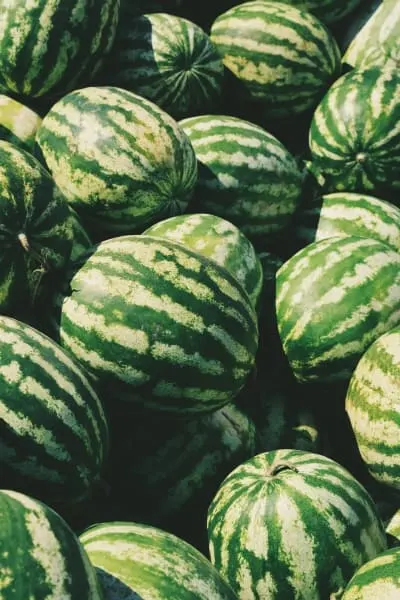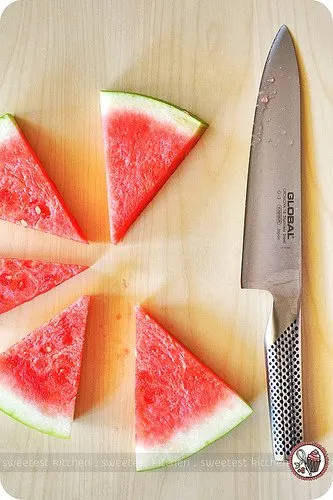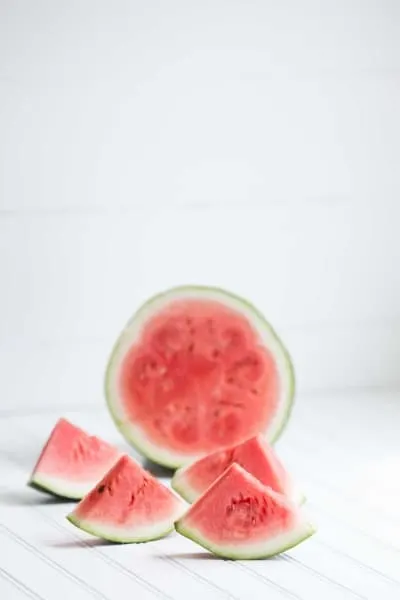Summertime means watermelon, right? There’s nothing like a few slices of it or some watermelon-infused water on a sweltering day.
But it’s easy to get a bit overeager and buy much more than we need. Instead of a quarter or a half, we purchase the whole fruit because it’s cheap. And only after a day or two we start to really think about storage and shelf life of this fruit.
There’s nothing wrong with this approach, either. I know I occasionally buy way too much food when it’s on sale, or I’m feeling like eating it the whole week. The excitement passes after a couple of days, and that’s when I think about how to make sure that products won’t spoil.

So if you’ve bought more watermelon than you can handle, let’s talk about how you can get the most out of it. And to start things off, let’s check if it isn’t bad already.
Can Watermelon Go Bad and How to Tell If It Is Bad
Like all fruit, even dried fruit like raisins, watermelon can go bad.
If you have a whole watermelon on hand, it’s pretty much impossible to tell if it’s still good or not. Of course, if the rind is moldy on the outside, it’s probably better to toss it out. But if there are only some smaller dark spots or bruises, that doesn’t tell us much about the condition of the flesh.
Generally, if the outside is firm, bruiseless, and relatively uniform in color, the flesh should be just fine. To check if the watermelon is okay, we need to examine its insides. And that’s a bit of a catch-22 because the whole watermelon lasts much longer than a cut one.

If you have sliced or quartered watermelon on hand, it’s usually easy to tell if it’s good or not. First off, look for slime, mushy parts, dark blotches, or loss of color. Either one is a sign of overripeness.
While those darker or paler spots won’t make you sick, you probably won’t enjoy them that much. When it comes to slime, I find it gross and discard it right away, and suggest you do the same.
In short, if the flesh doesn’t look fresh and tasty, it’s probably not and throwing it out is the way to go.
Besides appearance, give the fruit a good sniff. If it smells sour, it’s spoiled.
If everything seems fine, give the final verdict based on its taste.
Now that you know the signs of a bad watermelon, let’s talk about how and for how long you can store them.

How Long Does Whole Watermelon Last
A whole watermelon lasts at room temperature around 3 to 4 weeks once it’s cut from the vine ([WM]). So how long will it last once you buy it depends on how long it was in transit and sat in the produce section.
That time can vary quite heavily. It can take anywhere between a week and two weeks before the fruit gets to your supermarket, and it can sit there for a couple of days already before you buy it.
Because of that, it’s generally recommended to eat the watermelon within about 7 to 10 days of buying it.
Of course, if the fruit didn’t travel for that long and you got it right after it hit the produce section, it will likely last a few days longer. But it’s better to err on the side of caution and assume it will last no longer than a week.
Typically, we store a whole watermelon at room temperature ([WM]), possibly in the kitchen or pantry. But if you need to save it for a few days longer, up to about 2 weeks, you can transfer it to the fridge.
Once you cut the watermelon, or buy it pre-cut, things change a bit.

How Long Does Watermelon Last After Cutting
Cut or sliced watermelon lasts about 3 to 5 days in the fridge. It needs to be refrigerated, no matter if you’ve bought it pre-cut or quartered it yourself.
To make sure it stays fresh to that 5 days mark, always keep it wrapped tightly. Quarters you buy in the supermarket are usually covered with plastic wrap, and that’s how you should store the fruit.
If you won’t finish the whole thing, unwrap it, cut as much as you need, and rewrap. If the leftover piece can fit inside a freezer bag, you can use that too.
If you don’t wrap the fruit, the flesh will dry out and might pick up smells from the fridge. Neither is desirable, so keep it wrapped and you’re golden.
If you have more cut watermelon than you can use within a few days, you’re surely looking for ways how to prolong the storage of this fruit. And while not ideal, freezing is an option.

Can I Freeze Watermelon?
Watermelon consists mostly of water and doesn’t freeze particularly well. Once you thaw it, it will turn mushy, and it might lose some of its color and taste ([WM]).
But that doesn’t mean freezing it makes no sense whatsoever. Frozen watermelon works well in at least two applications: smoothies and making fruit infused water.
In a smoothie, it will be mashed and blended either way, so the texture change isn’t that big of a deal. Plus you can use watermelon cubes instead of ice cubes.
Here’s how to go about it. First, remove the seeds, and cut the flesh into cubes. Then transfer them on a cookie sheet lined with aluminum foil, and put it into the freezer.
Once the cubes are frozen, put them in a freezer bag, and voilà, you have frozen watermelon cubes for your smoothies.

The second option is prepping it to use in fruit-infused water.
Remove the rind and cut the watermelon into pieces ready to be put into water for infusion. You can leave the seeds in if you don’t mind them. Then, just like described above, you flash freeze the pieces on a baking sheet lined with aluminum foil.
Once frozen, transfer the parts into freezer bags. Enjoy with water on a hot day or whenever you need a refreshment.
In a Nutshell
- Whole watermelon lasts about a week at room temperature, 2 weeks refrigerated
- Cut or sliced requires refrigeration and lasts up to 5 days
- You can freeze watermelon, but it works best only for smoothies and fruit-infused water